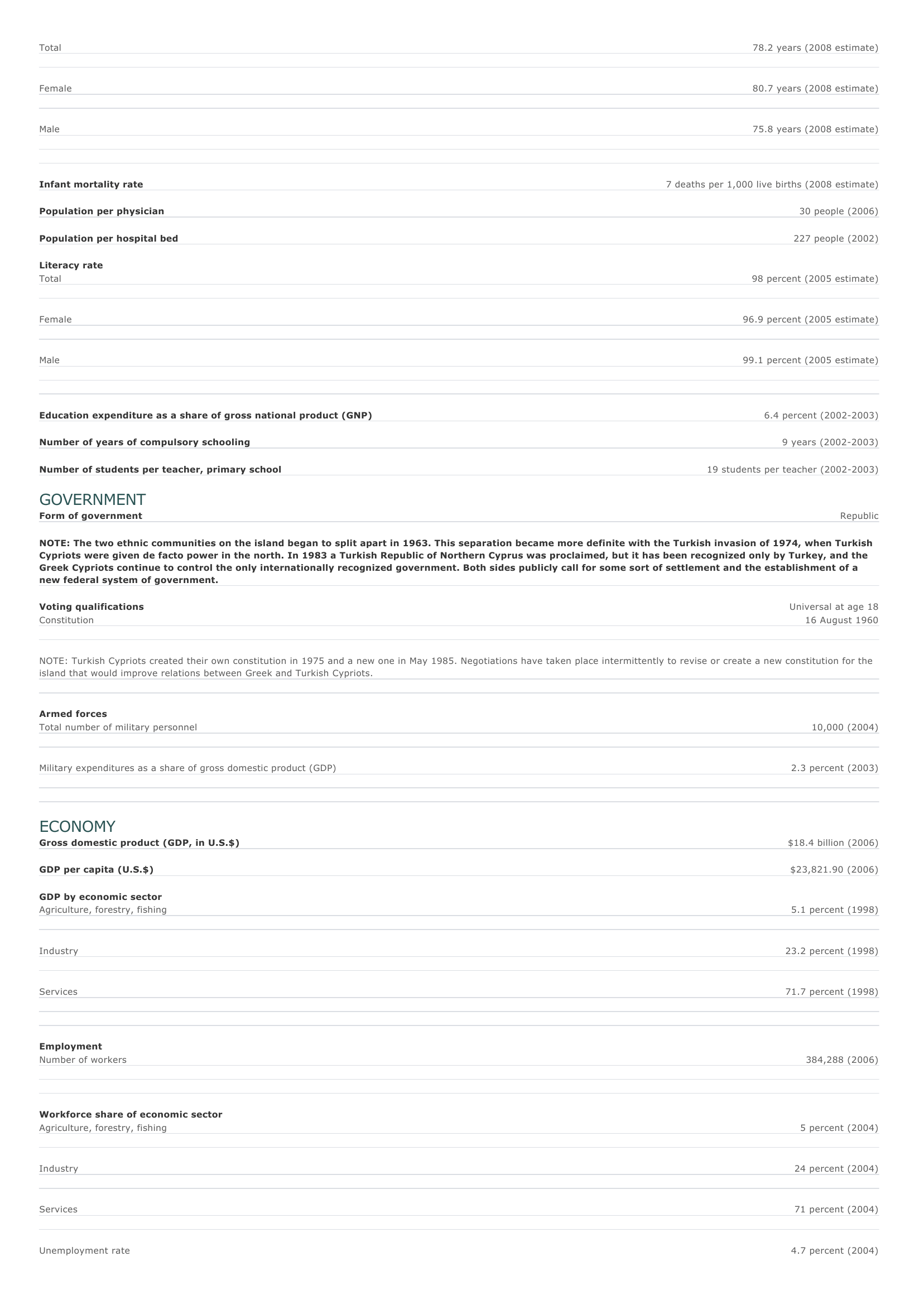Cyprus Facts and Figures.
Publié le 09/05/2013

Extrait du document
«
Total 78.2 years (2008 estimate) Female 80.7 years (2008 estimate) Male 75.8 years (2008 estimate) Infant mortality rate 7 deaths per 1,000 live births (2008 estimate) Population per physician 30 people (2006) Population per hospital bed 227 people (2002) Literacy rateTotal 98 percent (2005 estimate) Female 96.9 percent (2005 estimate) Male 99.1 percent (2005 estimate) Education expenditure as a share of gross national product (GNP) 6.4 percent (2002-2003) Number of years of compulsory schooling 9 years (2002-2003) Number of students per teacher, primary school 19 students per teacher (2002-2003) GOVERNMENTForm of government Republic NOTE: The two ethnic communities on the island began to split apart in 1963.
This separation became more definite with the Turkish invasion of 1974, when TurkishCypriots were given de facto power in the north.
In 1983 a Turkish Republic of Northern Cyprus was proclaimed, but it has been recognized only by Turkey, and theGreek Cypriots continue to control the only internationally recognized government.
Both sides publicly call for some sort of settlement and the establishment of anew federal system of government.
Voting qualifications Universal at age 18 Constitution 16 August 1960 NOTE: Turkish Cypriots created their own constitution in 1975 and a new one in May 1985.
Negotiations have taken place intermittently to revise or create a new constitution for theisland that would improve relations between Greek and Turkish Cypriots.
Armed forcesTotal number of military personnel 10,000 (2004) Military expenditures as a share of gross domestic product (GDP) 2.3 percent (2003) ECONOMYGross domestic product (GDP, in U.S.$) $18.4 billion (2006) GDP per capita (U.S.$) $23,821.90 (2006) GDP by economic sectorAgriculture, forestry, fishing 5.1 percent (1998) Industry 23.2 percent (1998) Services 71.7 percent (1998) EmploymentNumber of workers 384,288 (2006) Workforce share of economic sectorAgriculture, forestry, fishing 5 percent (2004) Industry 24 percent (2004) Services 71 percent (2004) Unemployment rate 4.7 percent (2004).
»
↓↓↓ APERÇU DU DOCUMENT ↓↓↓
Liens utiles
- Wyoming - Facts and Figures.
- Wisconsin - Facts and Figures.
- Washington - Facts and Figures.
- West Virginia - Facts and Figures.
- Alberta - Facts and Figures.


